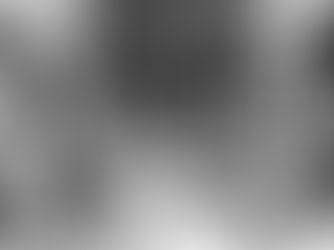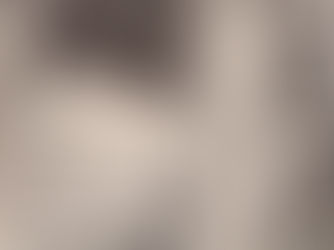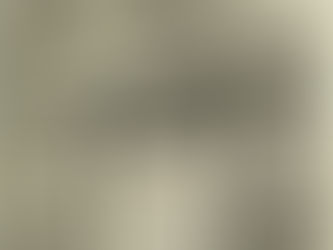top of page
Articles


Augustine on Canonical Penance: An Ethic of Criminal Sentencing
Introduction Canonical Penance in the early Church and the modern concept of prison, broadly construed, are both processes of...

Alexander Levy
21 min read


Does the Concept of ‘Spiritual Resistance’ Add to our Understanding of Jewish Life in the Ghettos?
In his seminal 1961 work The Destruction of the European Jews , Raul Hilberg proposed a thesis that sought to explain a perceived lack of...

Nathaniel Rachman
23 min read


Elite Overproduction: An Inside Perspective
1 To become an administrative official in imperial China necessitated following a burdensome path from an early age. To begin with, a...

Jakob Gomolka
10 min read


Painting through Doubt and Despair: In Conversation with Maggi Hambling
Maggi Hambling CBE is a painter and sculptor. Subjects for many of her paintings are the sea and the dead. Her sculptures are famous and...

Alexander (Sami) Kardos-Nyheim
2 min read


A Queer Theory Reading of Christabel by Samuel Taylor Coleridge
Elizabeth Susan Wahl suggests that during the eighteenth century, homosexual relations between women became an ‘open secret’ that was...

Lily-Rose Morris-Zumin
6 min read


Patriarchy and Politics: In Conversation with Professor Cynthia Enloe
Well-known for her book Bananas, Beaches and Bases , exposing the embedded systemic and institutionalised patriarchy that is evident not...

Teresa Turkheimer
13 min read


The Role of Architecture in International Law
Turrets and spires tower over rich façades and stained-glass windows. Ornate vases sprout up from formal Versaillais parterres made of...

Alessandro Angelico
8 min read


Directing the Design Biennale: In Conversation with Victoria Broackes
Victoria Broackes is Director of the 2021 London Design Biennale. Previously she worked for the Victoria and Albert Museum (V&A): as...

Joseph Court
11 min read


‘Canst thou draw out Leviathan with an hook?’: Job 41 in Hobbes’ Masterpiece
Can you draw out Leviathan with a fishhook, or press down its tongue with a cord? Can you put a rope in its nose, or pierce its jaw with a hook? Will it make many supplications to you? Will it speak soft words to you? Will it make a covenant with you to be taken as your servant forever?[1] * The rich symbolic inner workings of Hobbes’ Leviathan have been much commented on in the centuries since its publication, with most attention being given to its incomparable frontisp

Peter McLaughlin
12 min read


Mapping the Modern Sacred in Federico Fellini’s La dolce vita (1960) and Paolo Sorrentino’s La grande bellezza (2013)
The assumption we live in a secularized world is false. The world today … is as furiously religious as it ever was. —Peter Berger[1] Fig...

Marie-Louise James
12 min read


The French Veil Debate: State Insecurity and the Family
The family is often presented as an opponent to the state as the location of power, or as an alternative to state institutions. The 2004...

Mary Osborne
12 min read


Music in Times of COVID: In Conversation with William Christie and Claire Roserot de Melin
William Christie is an American-born French conductor and harpsichordist. He read History of Art at Harvard and then Music at Yale, where he specialised in the baroque repertoire. Opposed to the Vietnam war, he moved to France in 1970 and pioneered the renewal of French baroque music by creating his musical ensemble Les Arts Florissants in 1979. Since 1985, he has lived in his seventeenth-century manor in Thiré (Vendée) which hosts a yearly festival of baroque music, Les Jard

Gabrielle Desalbres
9 min read


War, Death, and Memory: In Conversation with Michael Sandle
Michael Sandle RA is a sculptor and one of Britain’s foremost living artists. He is an outspoken critic of many facets of today’s art...

Alexander (Sami) Kardos-Nyheim
8 min read


Geopolitics and Innovation at Louvre Abu Dhabi: In Conversation with Manuel Rabaté and Dr Souraya Noujaim
Manuel Rabaté is Director of Louvre Abu Dhabi. He has taught Arts & Cultural Management at Paris-Dauphine University and Paris-Sorbonne University Abu Dhabi. He is a Knight of France’s National Order of Merit. Dr Souraya Noujaim is Scientific, Curatorial & Collections Management Director of Louvre Abu Dhabi. She has studied the British Museum’s Arabic weights and measures, and has been Islamic Art History Chair at the École du Louvre. Louvre Abu Dhabi sits at a tense but

Alexander (Sami) Kardos-Nyheim
8 min read


The Future of the Museum of London: In Conversation with Sharon Ament
Sharon Ament is the Director of the Museum of London, and inspiring passion in the capital and its museum is her goal. Sharon joined the...

Joseph Court
10 min read


A Witness Walking to these Shores: Embodied Memory and the Dispersed Spatiality of Networked Presence
A witness walking to these shores in our time would not spy a single war-worn and sea-tossed Ithacan sailor returning to his homeland but rather thousands of woeful, current- day avatars of Odysseus, refugees who in the words of Homer find themselves ‘τῆλε φίλων καὶ πατρίδος αἴης’, ‘far from friends and home’. The linkage of space, politics, and the humanities in the theme of this conference is something more than a matter of mere historical timeliness—and certainly not opp

Michael Joyce
16 min read


Thus Dunks Zarathustra
It didn’t take long for the backlash against last summer’s enthralling ESPN Michael Jordan documentary The Last Dance to arrive. Before...

Hugo Drochon
5 min read


Ewell in the East (or Not): A Chinese Perspective on Racism in Music Studies
1. Introduction Music theory is white. —Philip Ewell Thus begins Philip Ewell’s article ‘Music Theory and the White Racial Frame’.[1] His...

David Chu
13 min read
bottom of page

